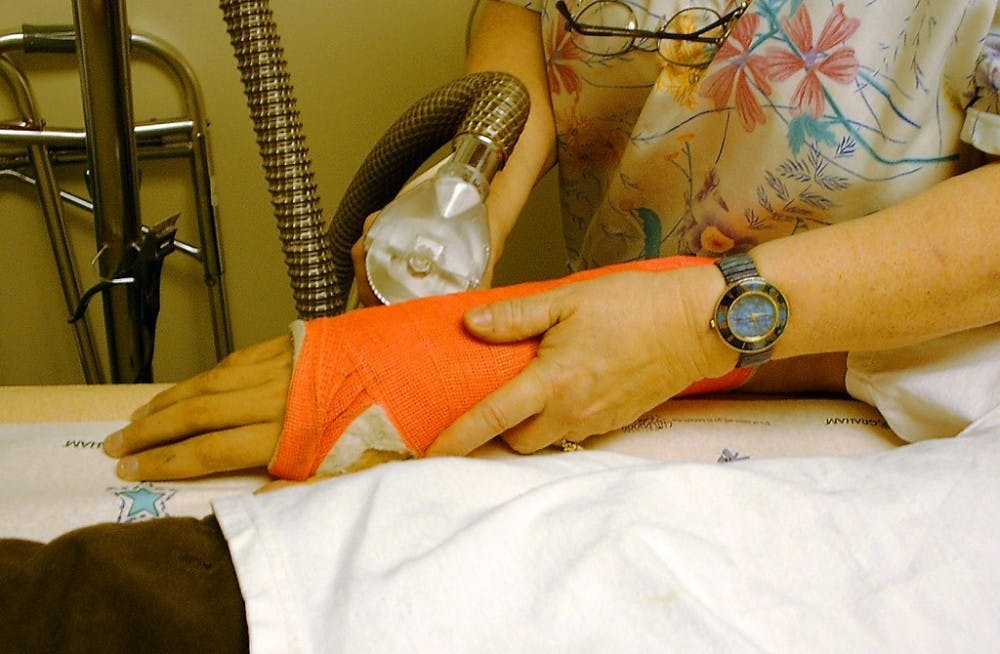Osteoporosis, a disease that results from an imbalance between bone resorption and bone growth, affects millions of Americans each year. Patients who suffer from this disease have weakened bones that fracture easily under impact, causing pain and problems in mobility. The patient usually does not realize that he or she has osteoporosis until he or she experiences the onset of constant back pain or a sudden fracture. To lower the risk of osteoporosis, doctors recommend exercise and a healthy diet, but there remains no treatment for osteoporosis-related injuries once the patient has the disease.
To help patients recover from bone injuries, researchers led by Pierre Weiss from the University of Nantes developed an injectable foam that both repairs bone damage and promotes bone growth. The treatment uses two syringes: one filled with monosodium phosphate and another filled with a silanized-hydroxypropyl methylcellulose based hydrogel. Monosodium phosphate is a commonly used chemical that acts as a thickening agent and, when exposed to the methylcellulose based hydrogel, it creates an injectable foam.
This foam is then mixed with a calcium phosphate cement, which is a paste that can be used for bone substitutions. This creates a strong, porous mixture that allows bone fractures to be stabilized while also promoting bone formation. The porosity of the foam is especially important because, in studies of bone formation, other researchers found that substantial formation only occurs when the material contain pores that are larger than 500 microns. In particular, this effect is seen in the cancellous bone, which is a flexible tissue that is affected by osteoporosis.
In osteoporosis, cells called osteoclasts break down bone at a quicker rate than osteoblasts, another type of cell, can rebuild the bone. As the disease progresses, bones get weaker, causing problems such as a decrease in height, stooping and back pain. Because osteoporosis is caused by an imbalance of bone resorption and bone formation, a foam that promotes bone formation may serve as a viable treatment for osteoporotic patients.
To test the foam, scientists focused on its mechanical properties and its effectiveness in healing bone injuries. First, researchers found the mixture to have a high injectability and a high cohesion, allowing physicians to administer the compound easily through a syringe. For in vivo studies of its effectiveness, researchers introduced defects into the thigh bones of rabbits. The researchers then treated these defects with the foam and left them to heal. At the end of the first week of the experiment, the foam had settled into the defects and stabilized the bone damage previously there. At the end of the sixth week of the study, scientists could see some bone formation on the scaffolding that was provided by the foam.
This was not the first attempt to create a substance that could help form bone, and scientists previously faced numerous challenges. While researchers realized that calcium phosphate cement could effectively substitute bone, they also knew it did not have large enough pores to fit blood vessels, which would need to extend into areas of injured bone to promote healing. Attempts to integrate larger pores into calcium phosphate cement were unsuccessful because it was hard to find non-toxic substances that would produce larger pores. Additionally if the cement contained too many pores, it could have broken down over time due to continuous contact with bodily fluids.
These problems were overcome by the development of this foam solution, which had pores that are both large enough to fit blood vessels and to make the foam-supported bone stable.
Although the foam is still quite far from the point of clinical trials, initial studies show that it could have promising applications in the medical fields.
















Please note All comments are eligible for publication in The News-Letter.